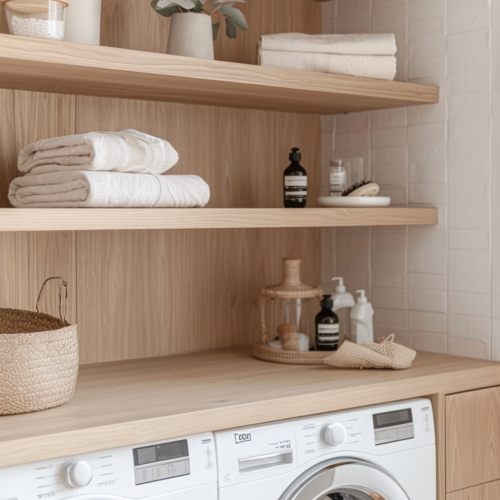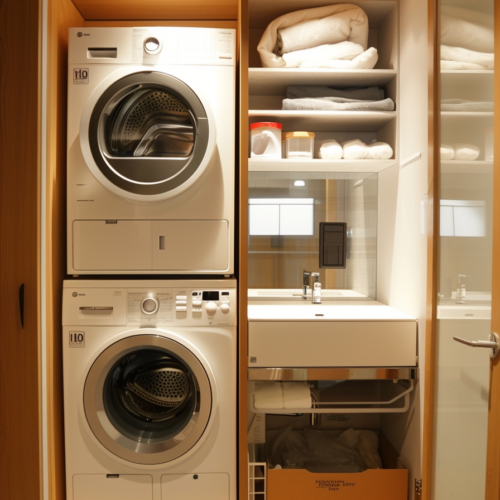Hanging plants from the ceiling can add beautiful greenery and life to any indoor space. However, caring for suspended plants does require some special considerations compared to potted plants sitting on shelves or plant stands.
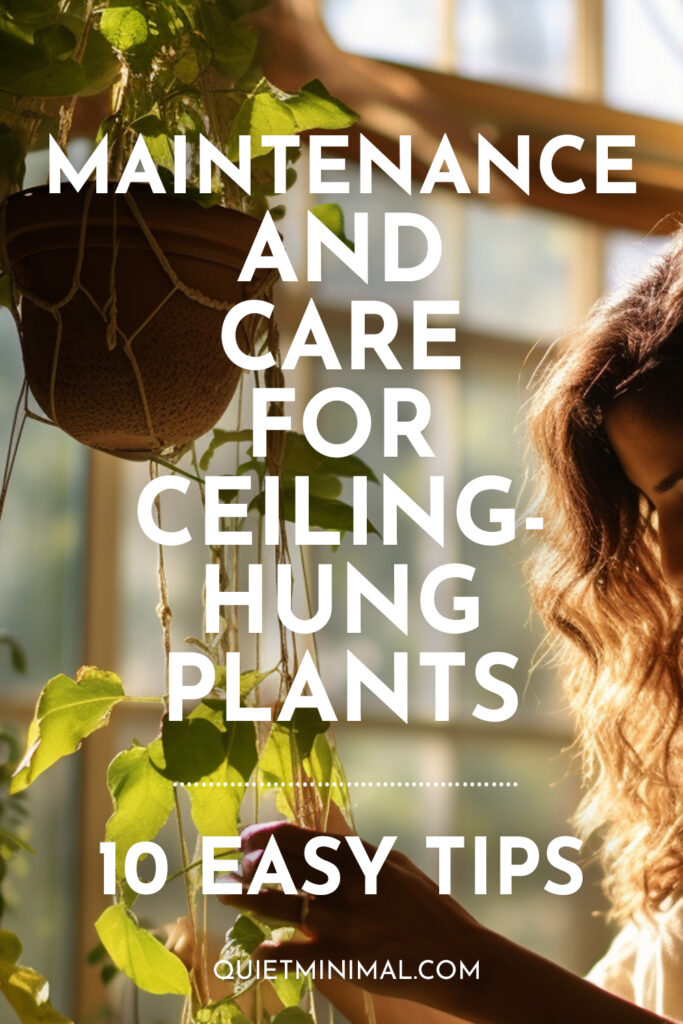
Their upside-down positioning affects watering needs, sunlight access, and overall plant health.
Follow this step-by-step guide for tips on watering, fertilizing, troubleshooting issues, and keeping your ceiling-hung plants thriving.
Assess Lighting and Position Plants Accordingly
When hanging plants from the ceiling, first assess the light exposure in different areas and position plants accordingly. Most indoor plants need adequate bright, indirect light to photosynthesize and grow properly.
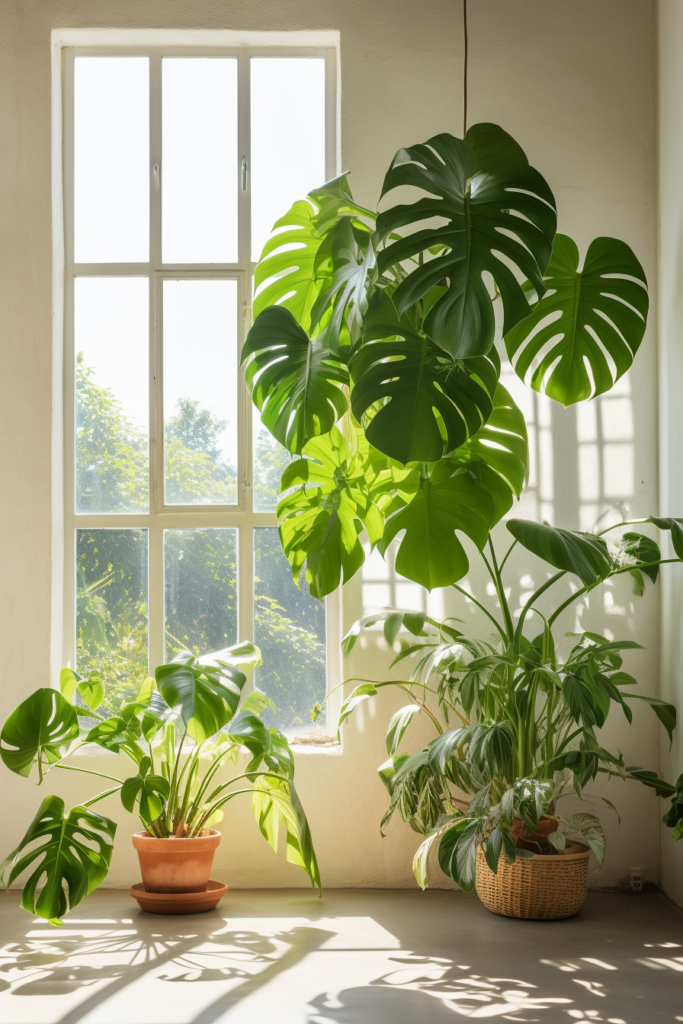
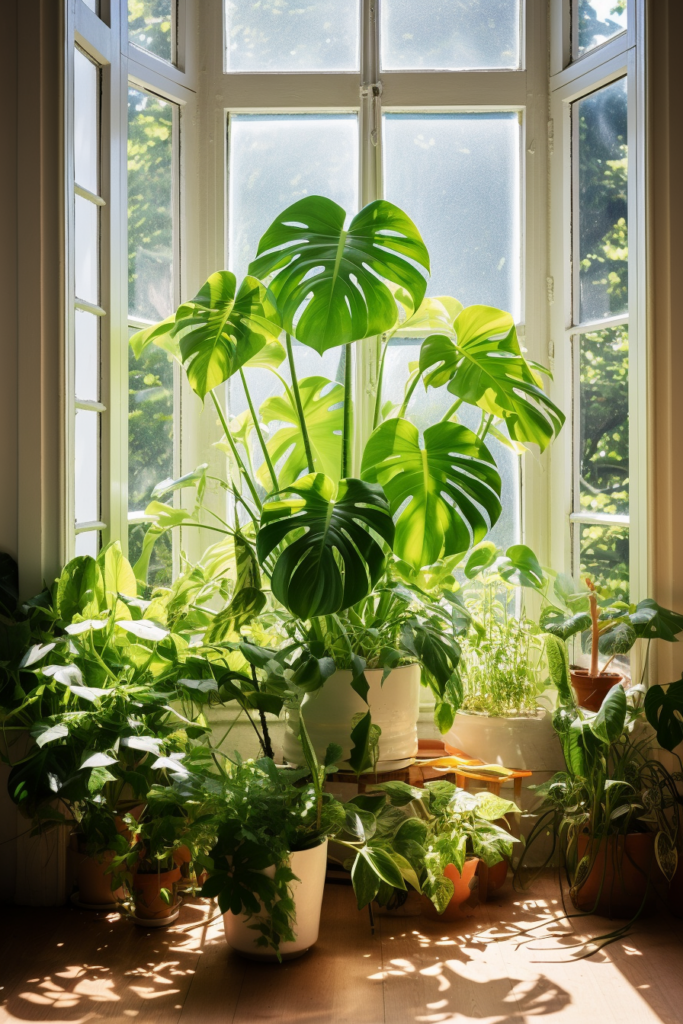
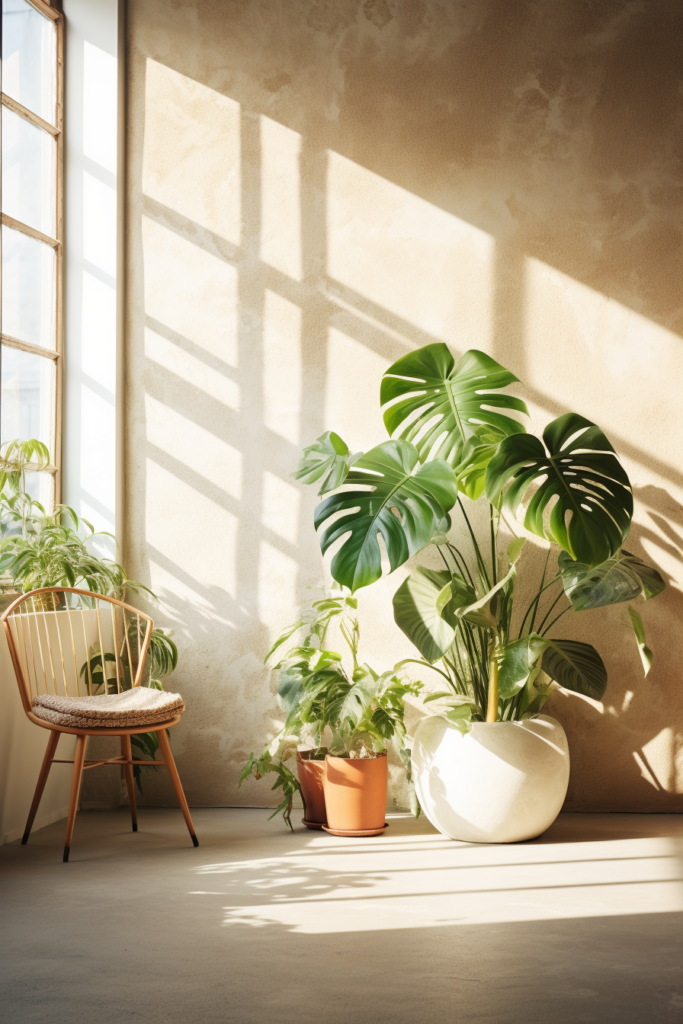
Here are factors to consider:
- South or west-facing rooms offer the brightest natural light indoors. East or north-facing rooms have more moderate or low light.
- Areas several feet away from bright windows still offer decent ambient lighting.
- Supplement with grow lights if needed in darker spaces without nearby windows.
Key Takeaways
- Assess room lighting when positioning ceiling-hung plants. Seek bright, indirect light best suited to that plant variety.
- South or west indoor exposures offer the brightest natural daylight. East and north rooms have lower light.
- Supplement lighting with grow lights as needed in darker interior rooms.
Water Ceiling Plants Thoroughly and Strategically
Watering overhead plants can be tricky. You want the soil to absorb water sufficiently without overflow dripping everywhere. Follow these tips:
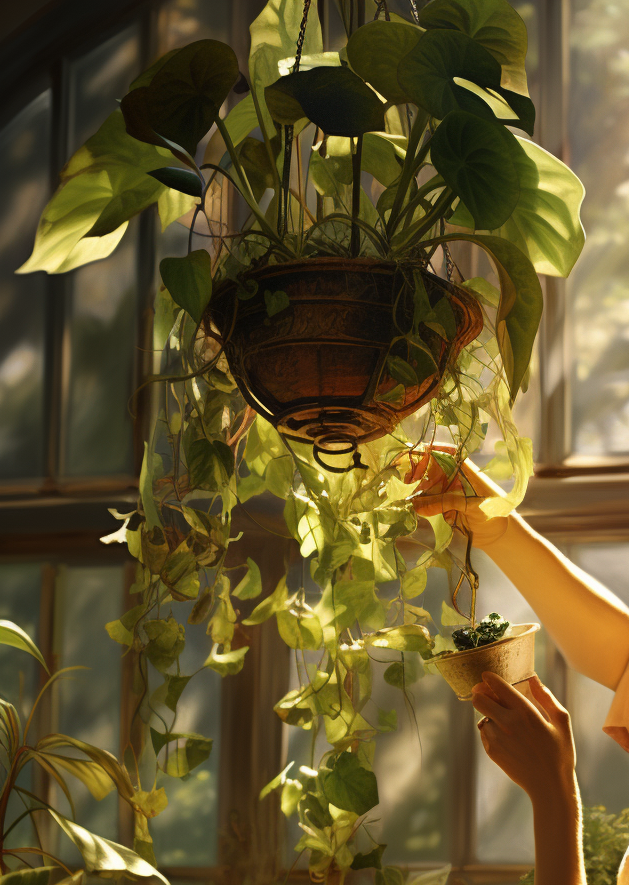
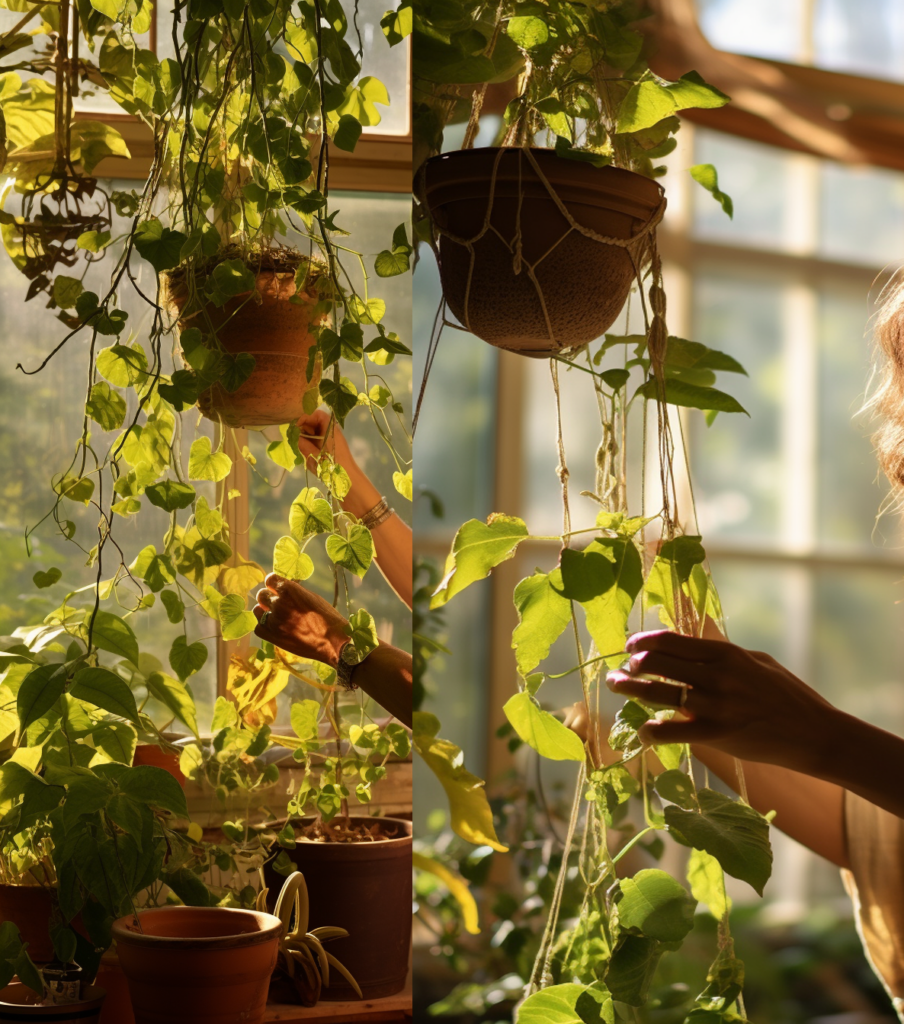
- Always thoroughly water so liquid flows from drainage holes. This ensures entire root zone saturation.
- Place hanging baskets inside cache pots or use hanging saucers to catch overflow. Empty after watering.
- Alternatively, water over sinks, then allow pots to drain before rehanging.
- For larger plants, enlist help taking them down for watering as needed.
Key Takeaways
- Water ceiling plants thoroughly until liquid flows from drainage holes and wets the entire root mass.
- Use cache pots or hanging saucers to catch water overflow from above.
- For larger plants, remove from the ceiling to water over sinks when needed.
Fertilize Regularly During Growing Season
While sunlight fuels plant growth through photosynthesis, fertilizer provides supplemental nutrition to truly help indoor greenery thrive.
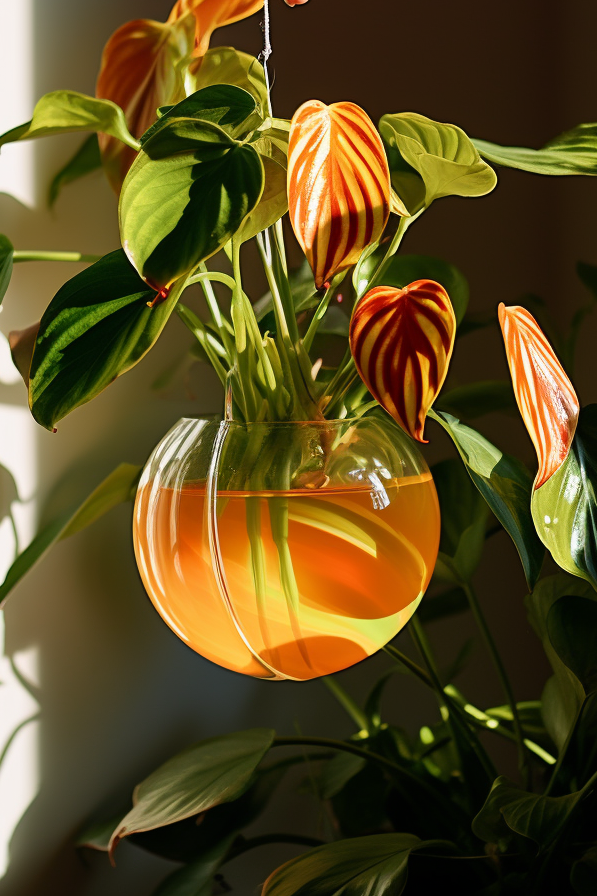
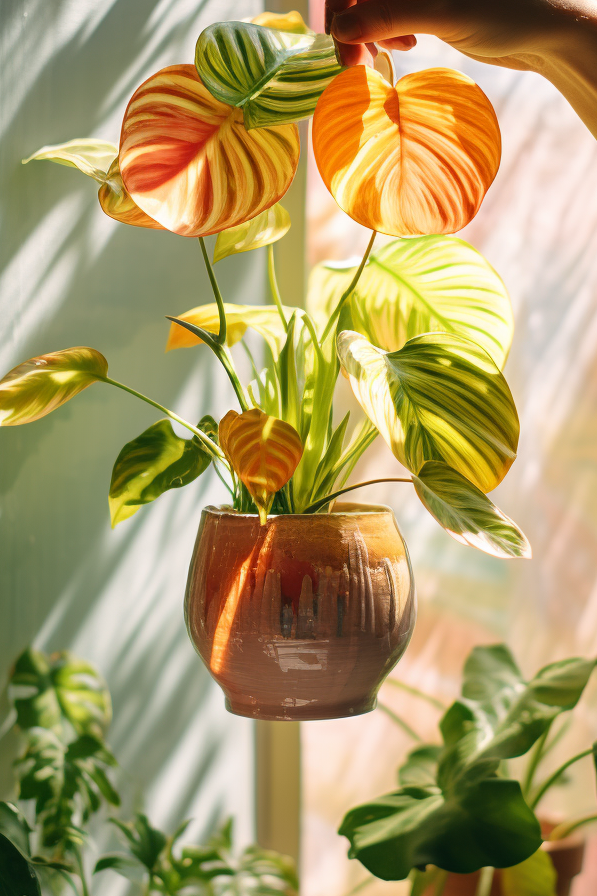
Follow these tips for fertilizing overhead houseplants:
- Use balanced liquid fertilizers twice monthly in spring through summer. Dilute to half- or quarter-strength.
- Alternate fertilizing with plain watering to flush salts from soil.
- Cease fertilizing in fall and winter when plants enter dormancy. Resume the following spring.
Key Takeaways
- Fertilize ceiling plants twice monthly, spring through summer, using diluted balanced liquid feeds.
- Flush soil as needed with plain watering to prevent salt buildup.
- Don’t fertilize in fall/winter when plants go dormant. Resume in spring.
Prune Overgrown Foliage and Vines
Letting ceiling plant vines or cascading foliage grow too extensively can lead to tangled messes requiring haircuts. Here are smart pruning tips:
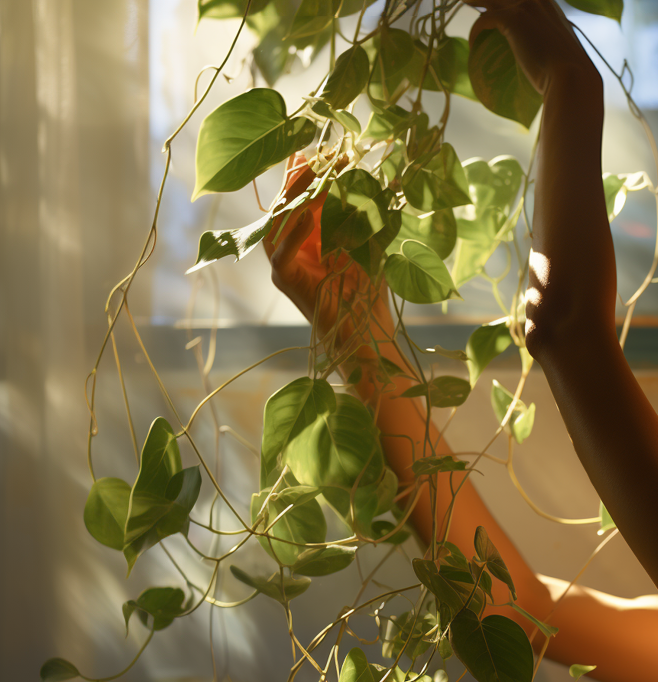
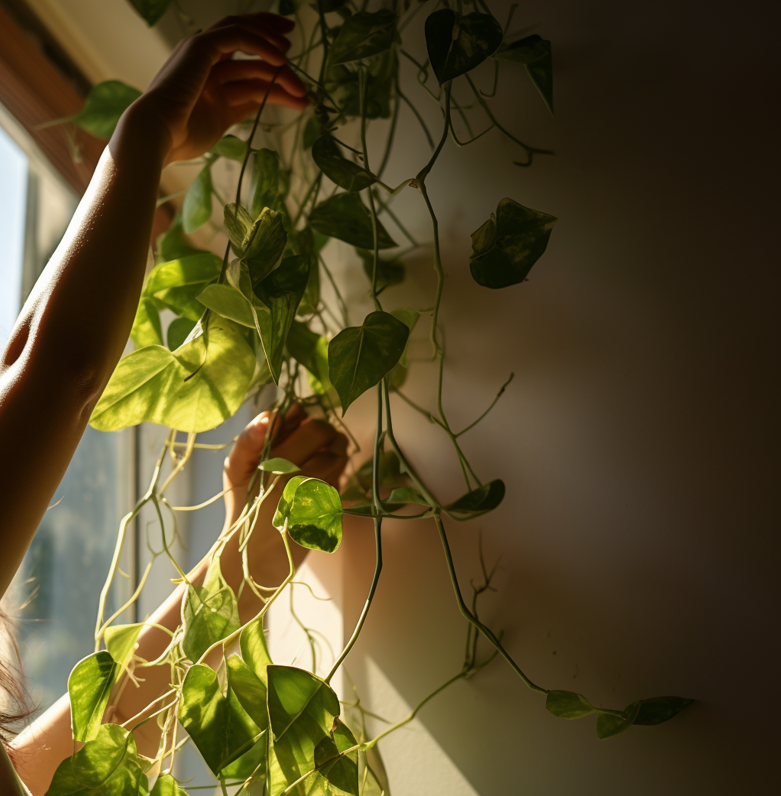
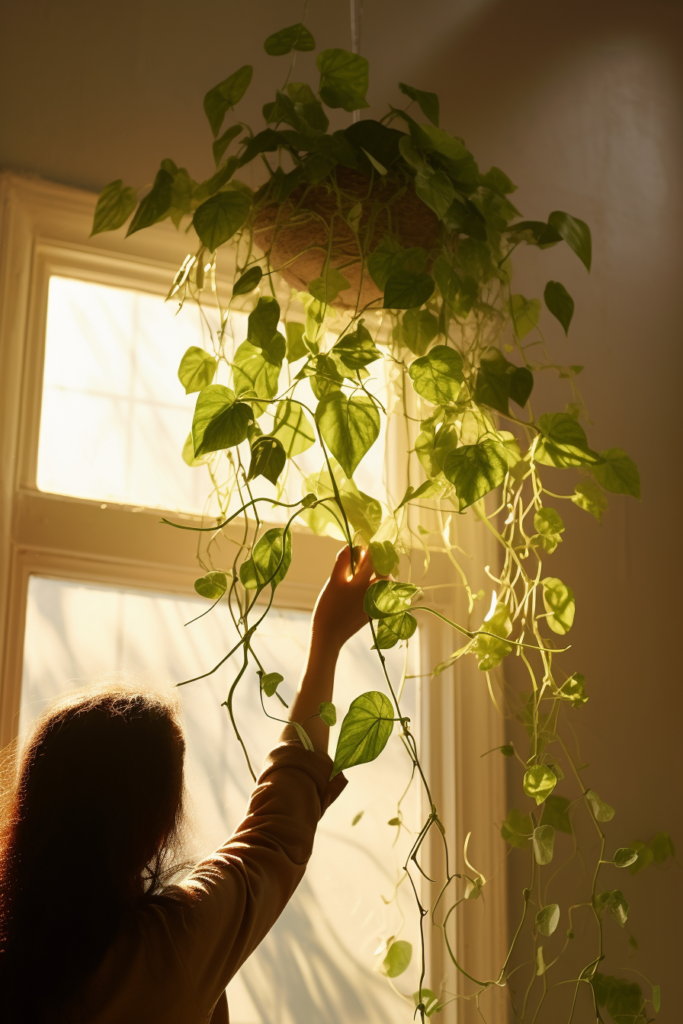
- Trim long wandering vines back to desired lengths. This also encourages bushier new growth.
- Thin overcrowded plant bunches to open air flow and light penetration.
- Make cuts just above leaf nodes to preserve stem cell zones for new offshoot development.
Key Takeaways
- Prune overgrown vines back to desired lengths. This encourages bushy new growth.
- Thin, crowded plant bunches to improve air circulation and light exposure.
- Cut just above leaf nodes to retain stem cell tissues. New shoots will emerge from nodes.
Propagate Ceiling Plants Easily
Many cascading greenery varieties propagate easily from stem cuttings. This allows you to multiply favorites for free. Follow these simple steps:
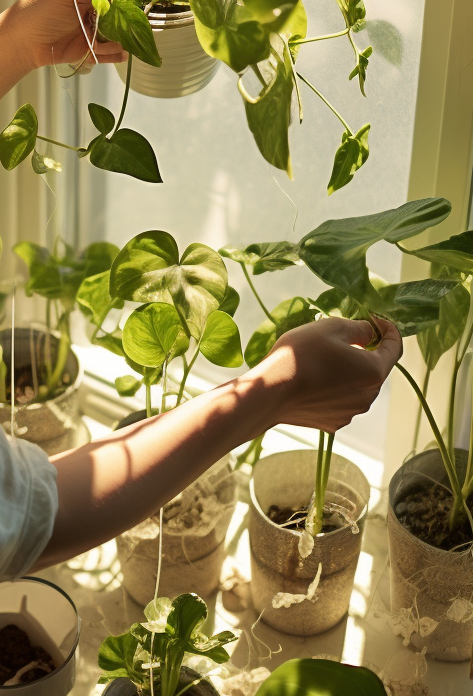
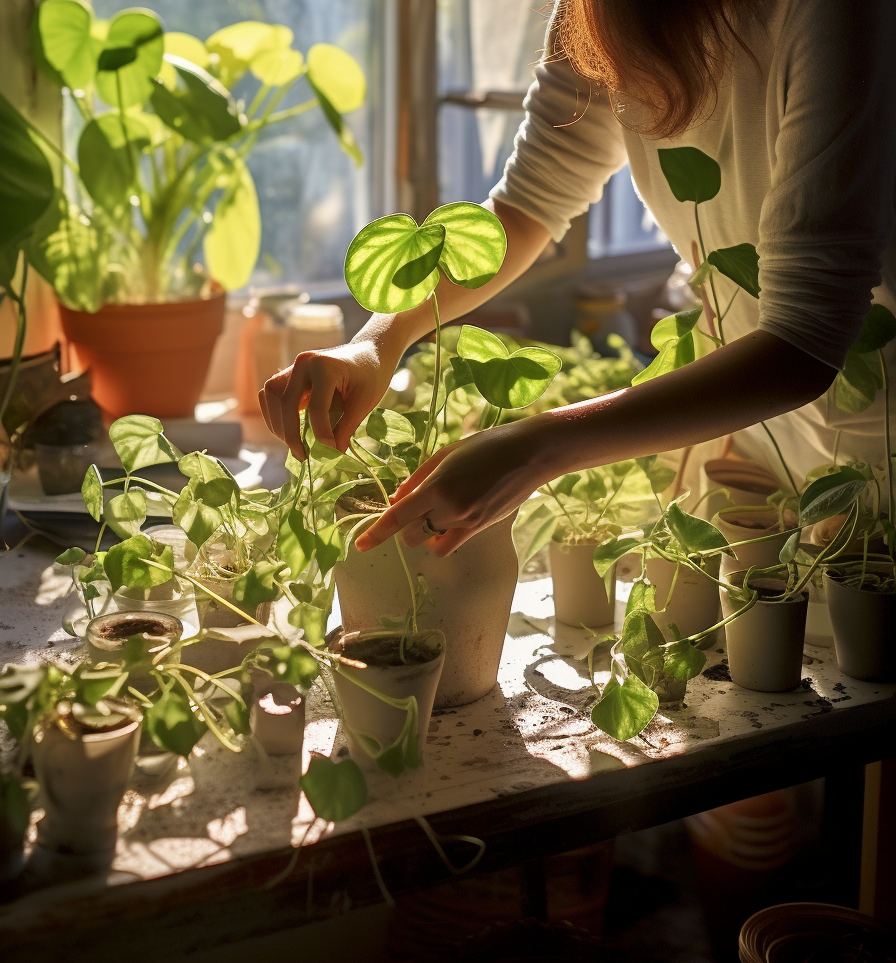
- Clip a 5-6 inch stem section below a leaf node. Remove lower leaves.
- Place cutting basal-end down in water. Roots will sprout from nodes submerged in water.
- Once several inches of roots develop, pot up into the soil. Keep soil moderately moist while new plants are established.
Key Takeaways
- Propagating creates new ceiling plant babies easily and affordably.
- Simply root clipped 5-6 inch stem cuttings in water, then transplant with roots into the soil.
- Keep freshly potted propagules moderately moist while young plants are established.
Troubleshoot Leaf Yellowing or Browning
If your suspended plants develop yellowing or browning leaves, don’t panic. This usually indicates inconsistent moisture. Check which underlying issue applies:
- Overwatering suffocates roots, leading to decline. Allow plants to dry adequately between waterings.
- Underwatering dehydrates leaf tissues, causing scorching. Resume consistent irrigation.
- Low humidity leaches moisture from plant foliage. Mist leaves or use humidifiers to supplement moisture.

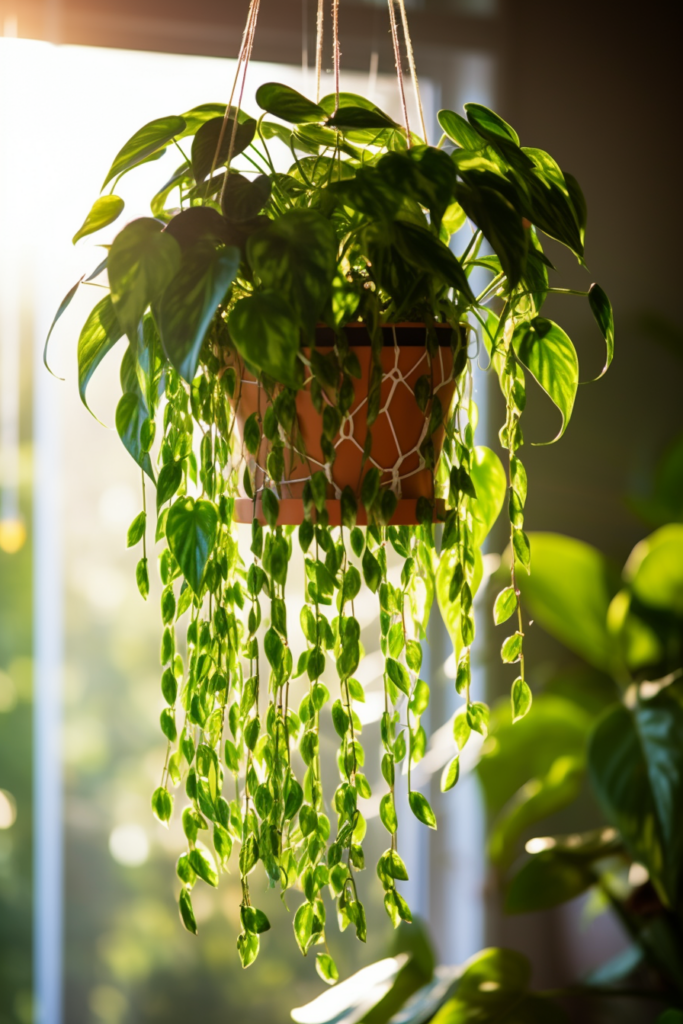
Key Takeaways
- Leaf yellowing or browning generally stems from uneven moisture levels.
- Overwatering and poor drainage cause decline. Allow soil to dry between irrigations.
- Underwatering dehydrates foliage. Resume consistent watering.
- Low ambient humidity dehydrates leaves. Mist or use humidifiers to supplement.
Safeguard Health With Preventative Insect Controls
Vigilantly monitoring for pests ensures you catch infestations early before they damage ceiling plant health. Take these proactive steps:
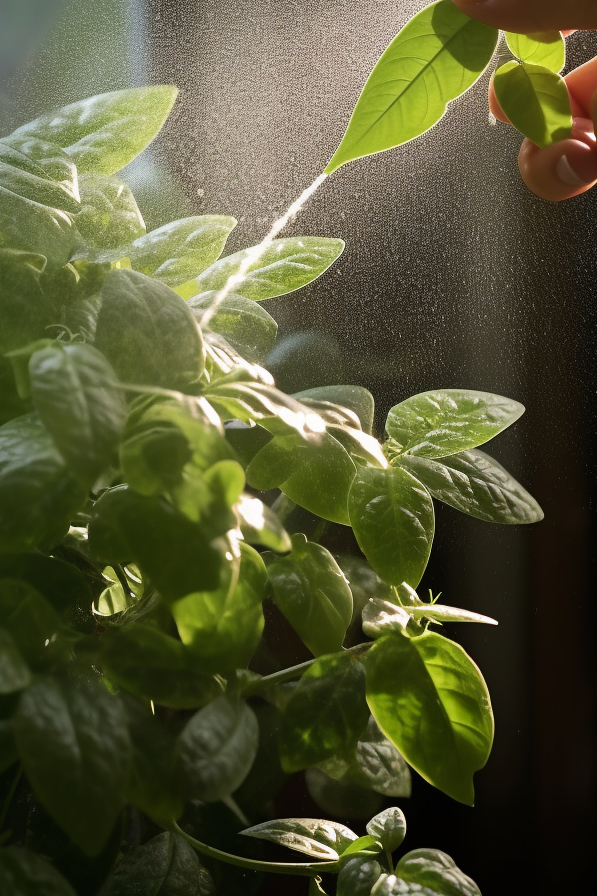
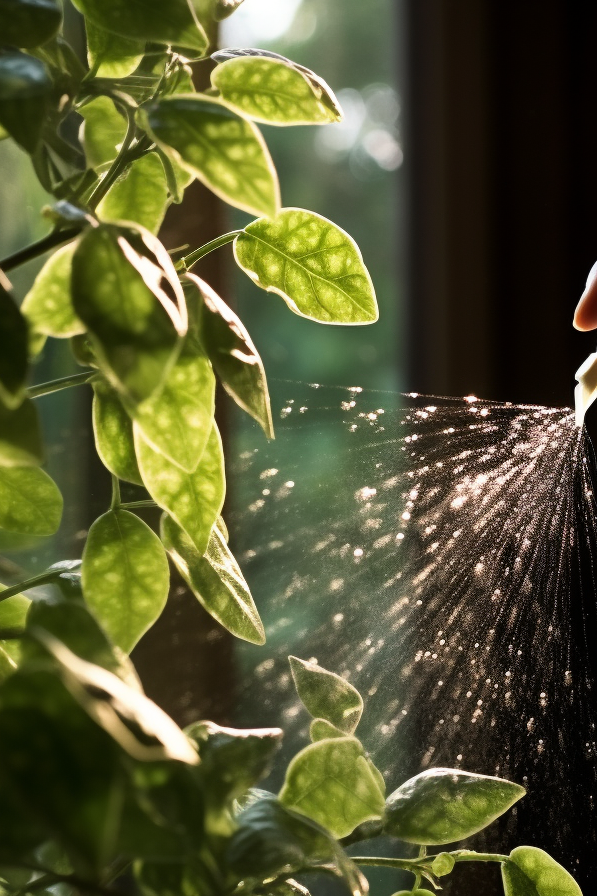
- Quarantine new plants before mixing with existing ceiling greenery to prevent pest transmission.
- Routinely hand-wipe plant leaves with damp cloths to remove dust and detect insects early.
- Apply neem oil or insecticidal soaps preventatively every 2-3 weeks to deter pests.
Key Takeaways
- Quarantine new plants to avoid introducing pests to existing ceiling greenery.
- Routinely wipe plant leaves with a hand to prevent dust buildup and detect insects early.
- Apply preventative neem oil or insecticidal soap sprays every few weeks.
Repot Rootbound Plants Into Larger Containers
While some cascading varieties thrive rootbound in smaller pots, most plants eventually need upsized containers. Signs it’s time include:
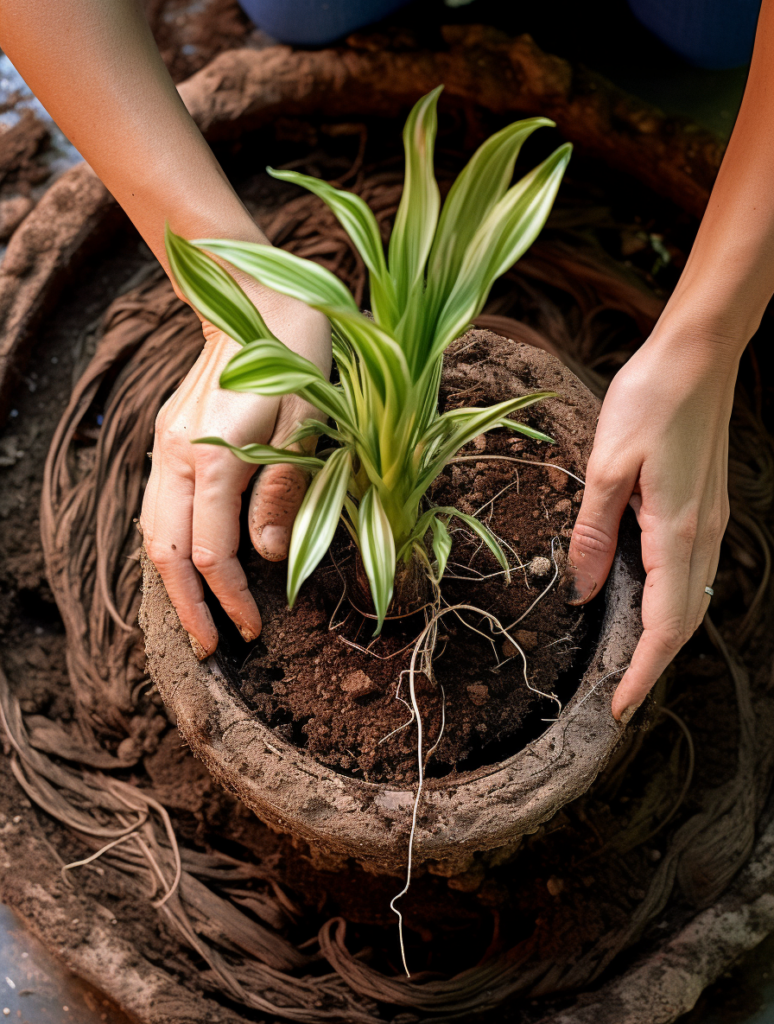
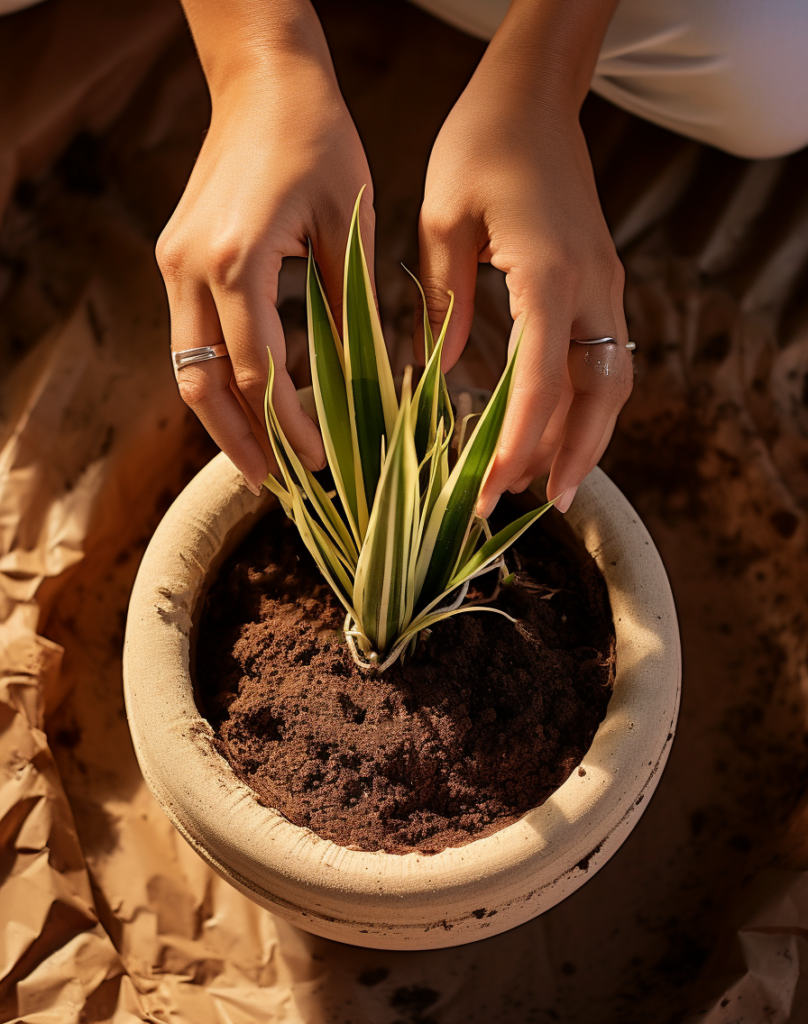
- Roots visibly circle inside drainage holes or atop the soil.
- Soil drying very rapidly between waterings as plants grow.
- Slowed growth from crowded roots competing for space and nutrients.
When repotting, shift plants into pots 2 inches wider, granting extra room for root expansion and new soil revitalization.
Key Takeaways
- Repot into larger containers when roots visibly encircle pots or grow on soil surfaces.
- Also, repot plants if the soil dries rapidly, indicating a too-small volume.
- Slowed growth signals overly crowded roots competing for space and nutrients.
- Size up 2 inches when repotting to allow ample room for root spread.
Improve Drainage With Soil Amendments
Excess moisture can be problematic for suspended containers where gravitational drainage is reversed. Improve drainage by amending the potting mix with:
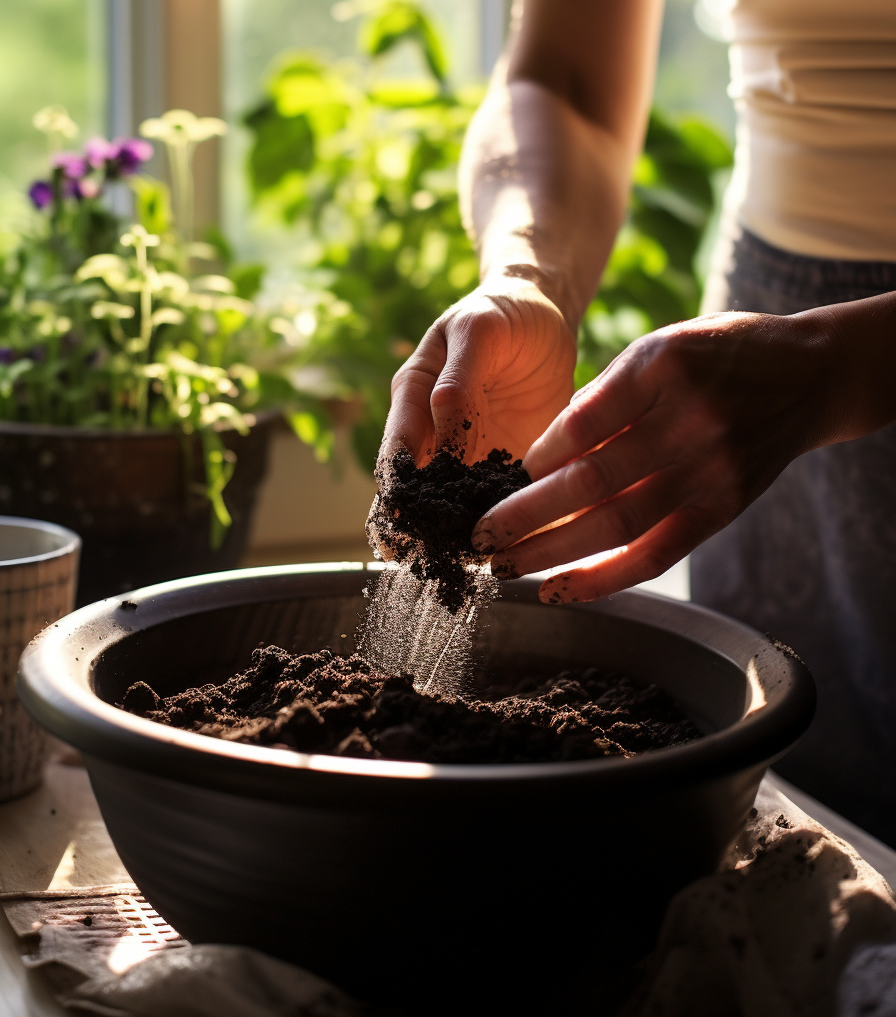
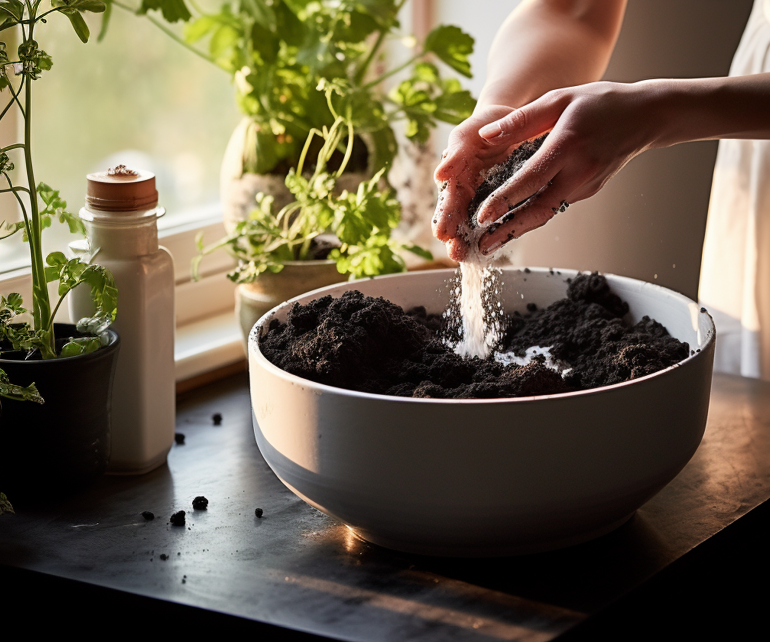
- Coarse sand, pumice, or perlite to create more pore space for drainage. Aim for 20-30% amendments by volume.
- Activated charcoal absorbs excess moisture while combatting root disease. Mix in at 5% ratio.
- Orchid bark offers longer-lasting drainage and aeration compared to faster-decomposing peat or composts.
Key Takeaways
- Mix sand, pumice, or perlite into regular potting soil at 20-30% ratios to improve drainage.
- Activated charcoal pellets also enhance drainage while suppressing pathogens. Use a 5% mix ratio.
- Orchid mixes with bark offer longer-lasting moisture control compared to standard mixes.
Monitor Plant Health and Growth Habits
Get to know your ceiling plant varieties’ optimal moisture, feeding, and lighting needs based on their natural growth habits. For instance:
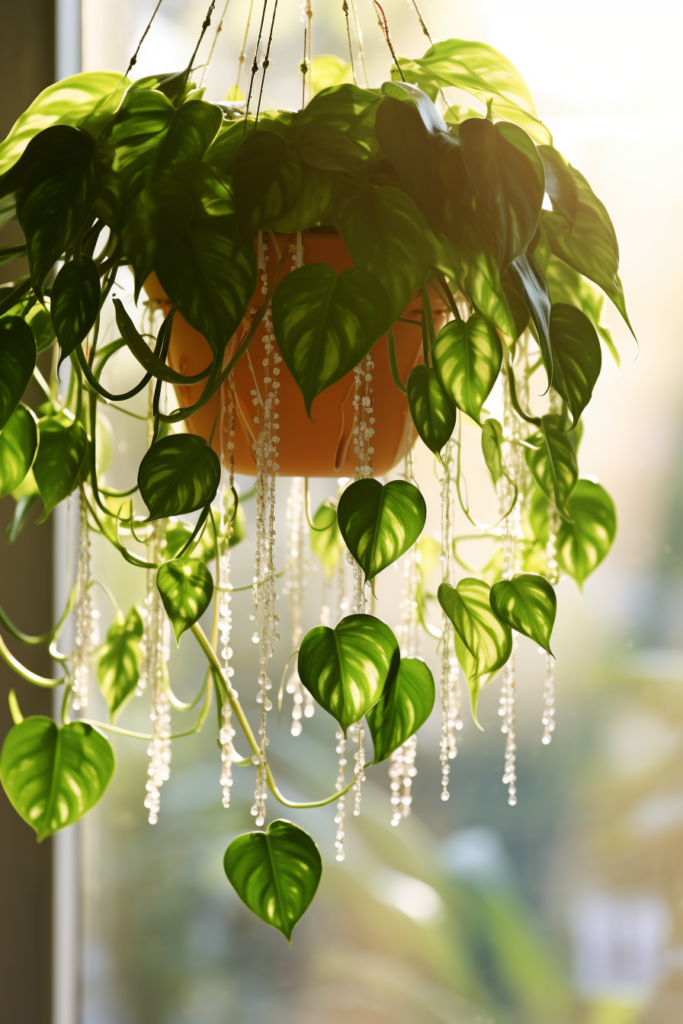
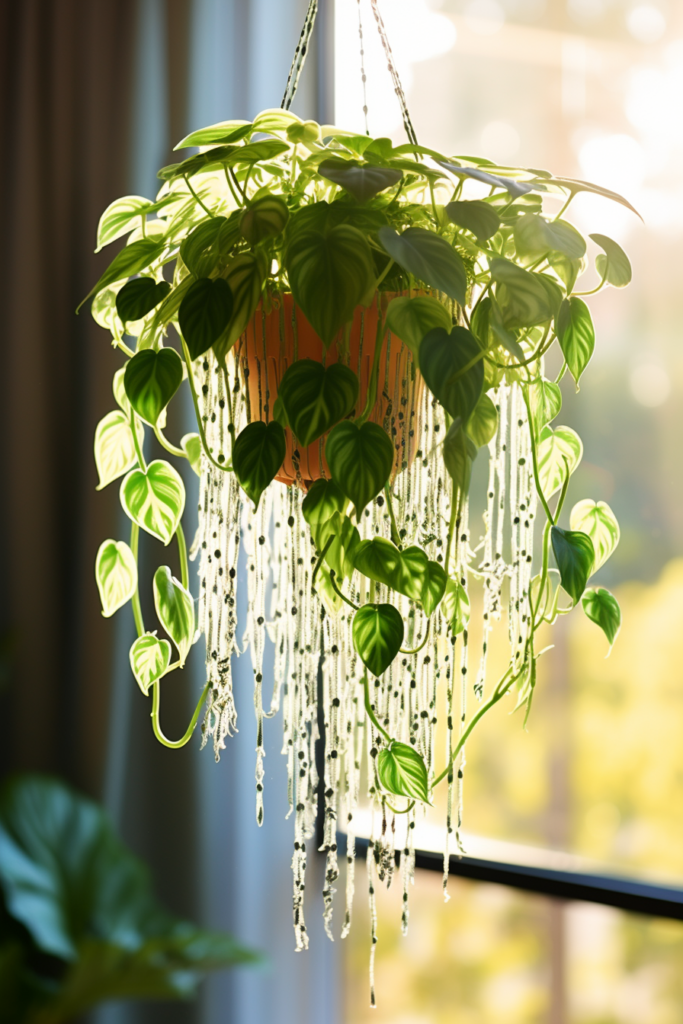
- Jungle vines like pothos and philodendrons thrive in bright, humid environments with frequent irrigation and fertilizer.
- Succulents prefer strong light with less frequent water and absolutely require quick-draining amended soil.
- Observe plant cues like leaf color changes or slowed growth rates indicating environmental mismatches.
Key Takeaways
- Learn plant varieties’ natural preferences for lighting moisture and food to provide optimal care.
- Jungle vines enjoy bright, humid spaces with abundant water and fertilizer.
- Succulents need strong light with minimal water and very fast-draining soil.
- Notice cues like color changes or slowed growth indicating subpar conditions.
Enjoy Creative Styling Possibilities
One benefit of ceiling mounts is the creative styling possibilities for displaying gorgeous cascades of greenery. Have fun with:
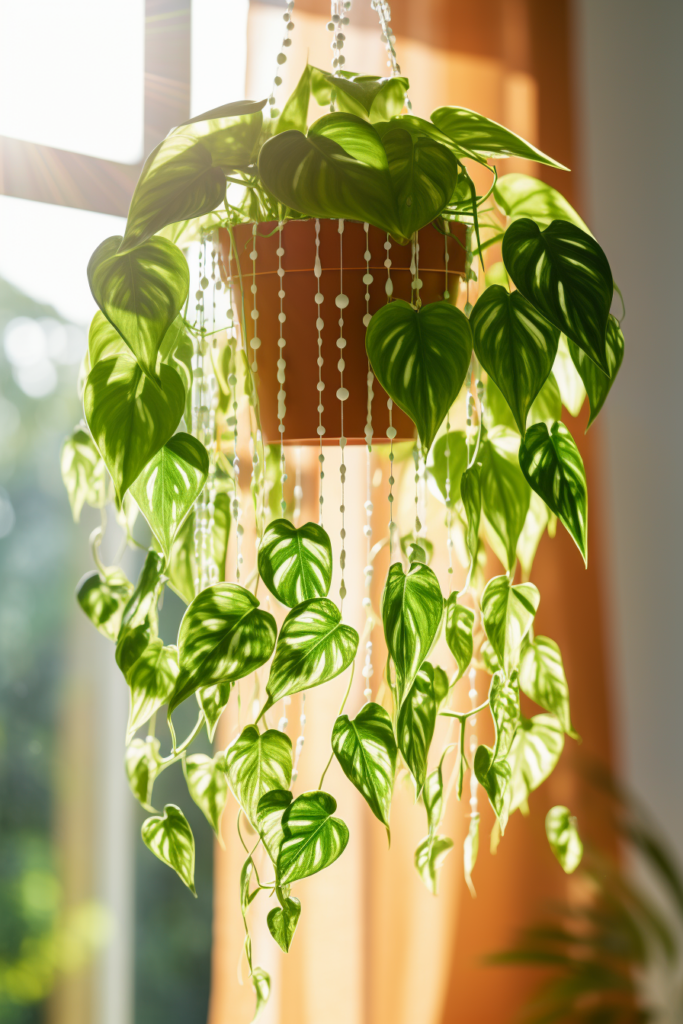
- Mixing trailing vine varieties like philodendrons, pothos and hoya in layered abundance.
- Contrasting leaf shapes and colors for visual interests, like purple waffle plants beneath peperomia.
- Incorporating hanging planters into wall installations or plant backdrops for dimension.
Key Takeaways
- Ceiling mounts enable creative opportunities for styling plants.
- Mix varieties with dimensional leaf shapes for visual interest.
- Incorporate into wall installations or backdrops for added depth.
Conclusion
Caring for houseplants suspended from ceilings or rafters poses some unique challenges compared to shelved potted plants, but a few adjustments make reliable care quite manageable. Strategic watering, pruning, and fertilizing, along with preventative health measures and appropriate soil conditions, will keep overhead greenery thriving beautifully. Take time to understand your plants’ preferences and creatively style abundant cascading textures for an indoor jungle oasis.
Follow Quiet Minimal on Pinterest for more home design tips and inspiration.
